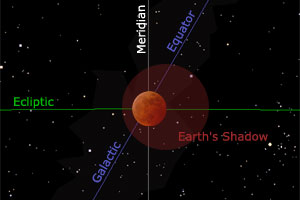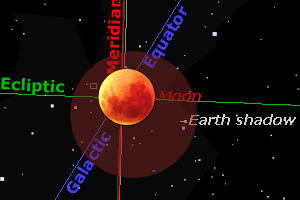 Total Lunar Eclipse Dec 20/21 2010
Total Lunar Eclipse Dec 20/21 2010
The Moon and the Earth have a very special relationship in the Cosmos. The Moon is close enough to us to tug our oceans into tidal swells, and even to make you (very slightly) lighter when it's overhead. You can even "touch" the Moon, electromagnetically, by aiming a flashlight at it and pressing the button: about a second after you do, the photons you launch physically contact the soil and rock on the Moon's surface (and the way a flashlight beam spreads out, you don't even need good aim). And of course the Moon is the only place in the Universe we've personally visited.
One of the most striking and beautiful examples of the Earth-Moon relationship takes place during a total lunar eclipse, when the Moon passes through the Earth's shadow, transforming in a couple of hours from the stark brilliance of the Full Moon to the dark ruby-hued wonder of "umbral occlusion"—or totality.
Monday evening, December 20th, starting at about 9:30 PM, the Moon will begin to enter the Earth's partial, or "penumbral," shadow. Around 10:30, it begins to enter the umbra (full shadow), and by 11:40 will be completely engulfed: "totality." Totality will last until 12:53 AM Tuesday morning, when the Moon begins to leave the umbra.
While the extended weather forecast at the moment doesn't look favorable for the SF Bay Area, there are always freak changes in weather to hope for. Also, we'll be having a Lunar Eclipse celebration at Chabot Space & Science Center, rain or moonshine, which will be a lot of fun: Lunar Labs, planetarium shows, sci-fi movie reels, and every Moon-related song we could find—hope to see you there!
